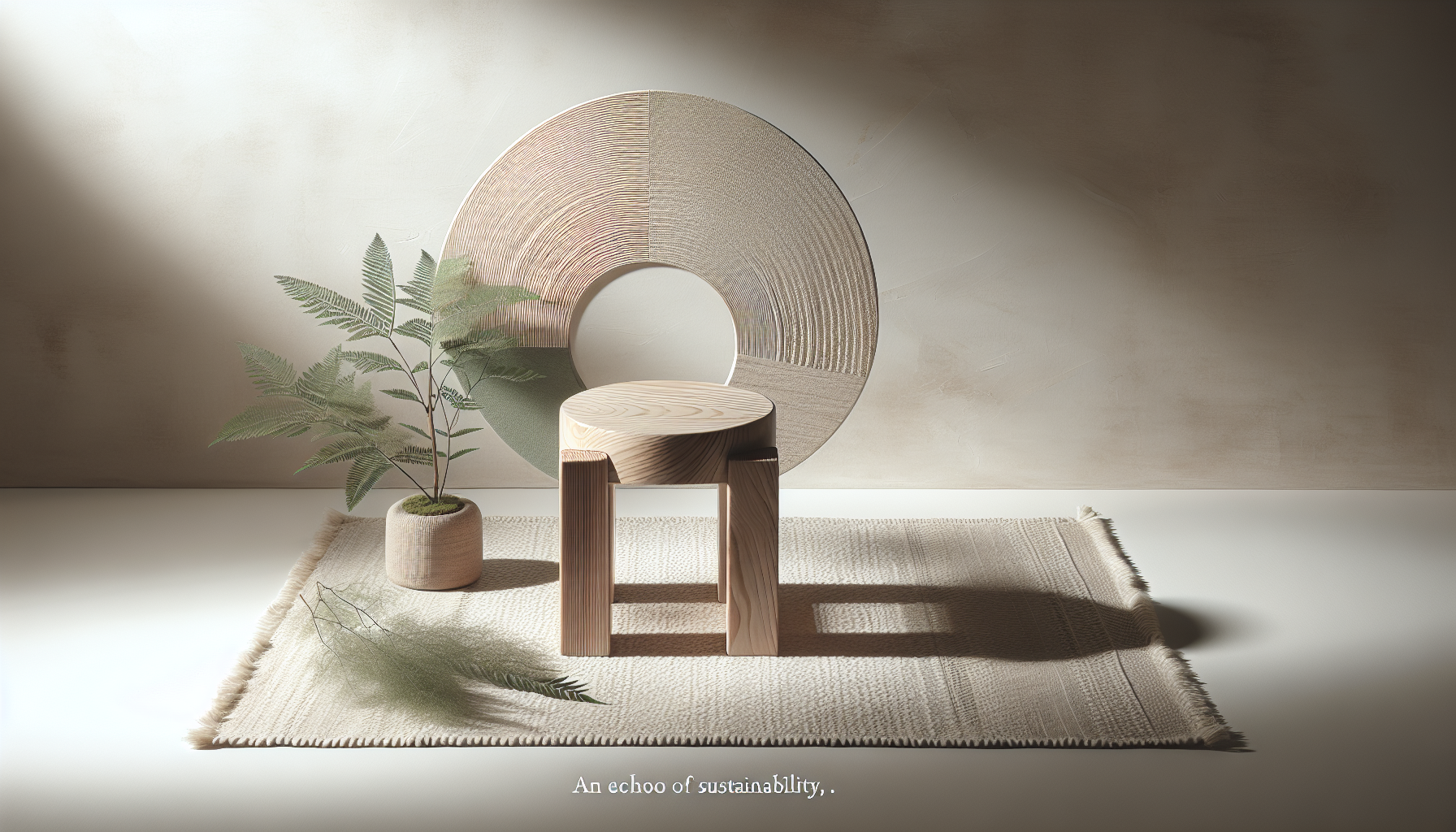How do you find sustainable Japandi decor pieces? It can be exciting yet a bit overwhelming given the myriad of options available in the realm of home decor. This unique blend of Japanese minimalism and Scandinavian functionality not only elevates the aesthetic value of your space but also aligns beautifully with sustainable living. Let’s embark on a journey together to discover how you can find these stunning pieces.
Understanding Japandi Decor
Before diving into the specifics of sustainable options, it’s essential to grasp what makes Japandi decor so appealing. Japandi is a design style that harmonizes the minimalist traits of Japanese design with the cozy, functional aesthetics of Scandinavian decor. This blend prioritizes simplicity, elegance, and harmony, focusing on natural materials and earthy colors.
Characteristics of Japandi Design
- Natural Materials: Wood, bamboo, and stone are staples in Japandi homes, creating a connection to nature.
- Neutral Color Palettes: Think soft browns, grays, and whites that evoke tranquility and create a soothing aura.
- Functional Furniture: Every piece has a purpose, minimizing clutter while maintaining style.
- Minimalism: The philosophy of ‘less is more’ is pivotal in creating a serene environment.
By familiarizing yourself with these elements, you can more effectively seek out sustainable options that resonate with this design ethos.
The Importance of Sustainability in Home Decor
In today’s world, the impact of our choices on the environment is significant. Choosing sustainable decor means you’re not just enhancing your home; you’re making a conscious decision to support the planet. Here’s why you should consider it:
Environmental Benefits
- Reduced Waste: Sustainable materials often come from renewable resources, reducing the need for new products.
- Lower Carbon Footprint: Many sustainable decor pieces are locally sourced, decreasing transportation emissions.
- Eco-friendly Production: Brands focusing on sustainability often use low-impact manufacturing processes.
Healthier Home Environment
- Non-Toxic Materials: Many sustainable items utilize natural finishes and paints, improving indoor air quality.
- Durability: Sustainable products are often designed to last, decreasing the need for replacements.
Understanding the eco-conscious benefits can motivate you to seek out decor that aligns with your values and lifestyle.
Identifying Sustainable Japandi Decor Pieces
Finding the right pieces for your home should be both enjoyable and fulfilling. Below are some tips to help you identify sustainable Japandi decor.
Material Matters
The first step in identifying sustainable decor is to examine the materials used. Here’s a brief rundown of what to look for:
| Material | Sustainability Factor |
|---|---|
| Bamboo | Fast-growing, renewable, and biodegradable. |
| Reclaimed Wood | Reduces waste and gives new life to old materials. |
| Organic Cotton | Grown without pesticides, making it safer for the environment. |
| Natural Stone | Abundant and durable, often requires minimal processing. |
| Metal (Recycled) | Reduces landfill waste and conserves natural resources. |
When shopping, don’t hesitate to ask the seller about the source of their materials. This can provide insight into the sustainability of a piece.
Ethical Brand Practices
Not all brands prioritize sustainability equally. Here’s how to identify businesses that align with your values:
- Transparency: Look for brands that openly share their sourcing and manufacturing practices.
- Certifications: Certifications such as FSC (Forest Stewardship Council) for wood and GOTS (Global Organic Textile Standard) for textiles indicate a commitment to sustainable practices.
- Fair Labor Practices: Check if the brand supports fair wages and safe working conditions for their workers.
By choosing to support ethical brands, you not only get beautiful decor but also contribute to a fairer economy.
Second-Hand and Vintage Finds
A wonderful way to find unique Japandi decor pieces is by exploring second-hand and vintage markets. Here are some benefits of this approach:
- Sustainability: You’re giving new life to existing items and reducing demand for new production.
- Uniqueness: Vintage pieces often come with character and history that new items may lack.
- Cost-Effectiveness: You can often find high-quality pieces at a lower price.
Consider visiting local thrift stores, flea markets, and online marketplaces to discover hidden gems that perfectly complement your theme.
Popular Sustainable Japandi Decor Items
Now that you understand how to identify sustainable options, let’s explore popular decor items that embody the Japandi aesthetic. Each of these can infuse your space with the tranquil and functional essence of this unique style.
Furniture
- Low-Profile Sofas: Look for options made from natural fibers or sustainably sourced wood frames.
- Side Tables: Reclaimed wood side tables can add rustic charm while being eco-friendly.
- Minimalist Shelving Units: Simple and sturdy designs made from bamboo or repurposed materials fit beautifully in any Japandi home.
Textiles
- Organic Cotton Throws: Use these to add warmth and texture while ensuring they’re free of harmful chemicals.
- Linen Curtains: Breathable and sustainable, linen lets natural light in while maintaining privacy.
- Rugs: Consider jute or wool rugs that are ethically produced and add comfort underfoot.
Decorative Accessories
- Ceramic Planters: Handcrafted from natural clay can add a personal touch while supporting artisans.
- Wall Art: Seek pieces made from recycled materials or local artists who use sustainable practices.
- Lighting Fixtures: Look for fixtures that use LED bulbs with lamp bases made of bamboo or recycled metals.
Incorporating these items can significantly bolster your Japandi decor while maintaining a commitment to sustainability.
Styling Sustainable Japandi Decor
Once you’ve gathered your sustainable Japandi decor, the next step is styling it. Creating a harmonious space is all about balance and arrangement. Here are some tips to help you achieve that perfect Japandi look.
Layering Textures
Mix various textures to create depth in your home. Combine smooth wooden surfaces with soft textiles and rugged natural elements. This layering not only adds visual interest but also makes the space feel warm and inviting.
Keeping It Minimal
Remember that less is often more. Choose a few statement pieces and avoid overcrowding surfaces. Allow each item to have its own space to breathe while contributing to the overall aesthetic.
Incorporating Plants
Plants are essential in Japandi decor, providing a refreshing connection to the outdoors. Choose low-maintenance varieties that thrive indoors, such as snake plants or peace lilies. They not only enhance the ambiance but also improve air quality.
Creating Defined Spaces
Arrange your furniture in a way that encourages flow and functionality. Use rugs to help delineate different areas, especially in open-concept layouts. This can make your space feel inviting and well-organized.
Maintenance and Care for Sustainable Decor
Taking care of your sustainable decor ensures longevity and preserves its beauty. Here are some practical tips to help you maintain your items:
Regular Cleaning
- Wood Furniture: Use a soft cloth and a natural cleaning solution to prevent damage.
- Textiles: Wash organic textiles in cold water and line dry whenever possible to conserve energy.
Proper Placement
- Avoid direct sunlight on wooden or textile pieces to prevent fading.
- Keep delicate items away from high-traffic areas, reducing the risk of damage.
Repair Instead of Replace
When something breaks, look for ways to repair it rather than discard it. This philosophy aligns perfectly with sustainable living and extends the life of your decor.
Final Thoughts
Finding sustainable Japandi decor pieces doesn’t have to feel daunting. By understanding the key elements of the style and being mindful of sustainability, you can create a serene, stylish space that reflects your values.
As you embark on this decorating journey, remember that each choice you make has the potential to impact not just your home but also the environment positively. So take your time to seek out the pieces that resonate with you, and enjoy the process of creating a beautiful, eco-friendly sanctuary that embodies the harmony of Japandi design.

